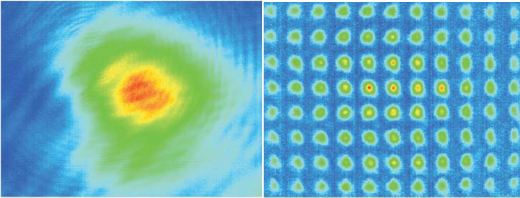Towards infrared diamond optoelectronics: time-resolved spectroscopy of excited acceptors in diamond
In the past years, semiconducting diamonds have received increasing attention because of its large band gap, radiation hardness, high carrier mobility, and high thermal conductivity. Semiconducting diamond is of particular interest for electronic and optoelectronic applications at harsh, extreme conditions, where high temperatures, high electric fields and high radiation doses prohibit or significantly limit the usage of other materials. In the last decades continuous progress has been made in diamond growth technologies, making this material available for a broader research and, in perspective, for a wide range of applications. Diamond films on diamond (epitaxial layers) or another substrate (polycrystalline) are commonly obtained at present by a chemical vapor deposition (CVD) process, while large diamond crystals require the so-called high-pressure-high-temperature (HPHT) method.
The transition energies of excited boron states in diamond (type IIb) fit to the infrared atmospheric window (3-5 µm) and thus making it attractive as detectors e.g. for ground-to-space communication. Whether boron centers have long- or short-living excited states and can serve for fast optical and optoelectronic actions remains currently an open issue. The project is dedicated to the investigation of lifetimes of excited acceptor states in diamond, the study of the underlying relaxation mechanisms as well as the exploration of the optical properties with respect to mid-infrared laser applications.
This project is funded by the Deutsche Forschungsgemeinschaft.
Figure: Absorption spectra of different boron doped IIb diamonds manufactured by the HPHT technology at TISNCM (Technological Institute for Superhard and Novel Carbon Materials) in Moscow. A typical sample image is on the right [V. D. Blank et al., Diamond & Related Materials 16, 800 (2007)]. The inset on the top left of the graph shows a set of dipole-allowed intracenter boron transitions in the IIb diamond [H. Kim et al., Physica B 302–303, 88 (2001)].
Contact: Martin Wienold, Heinz-Wilhelm Hübers
